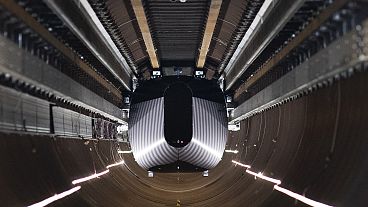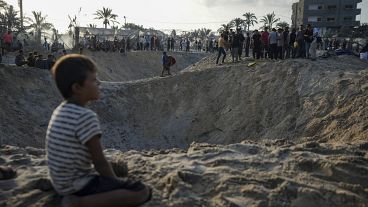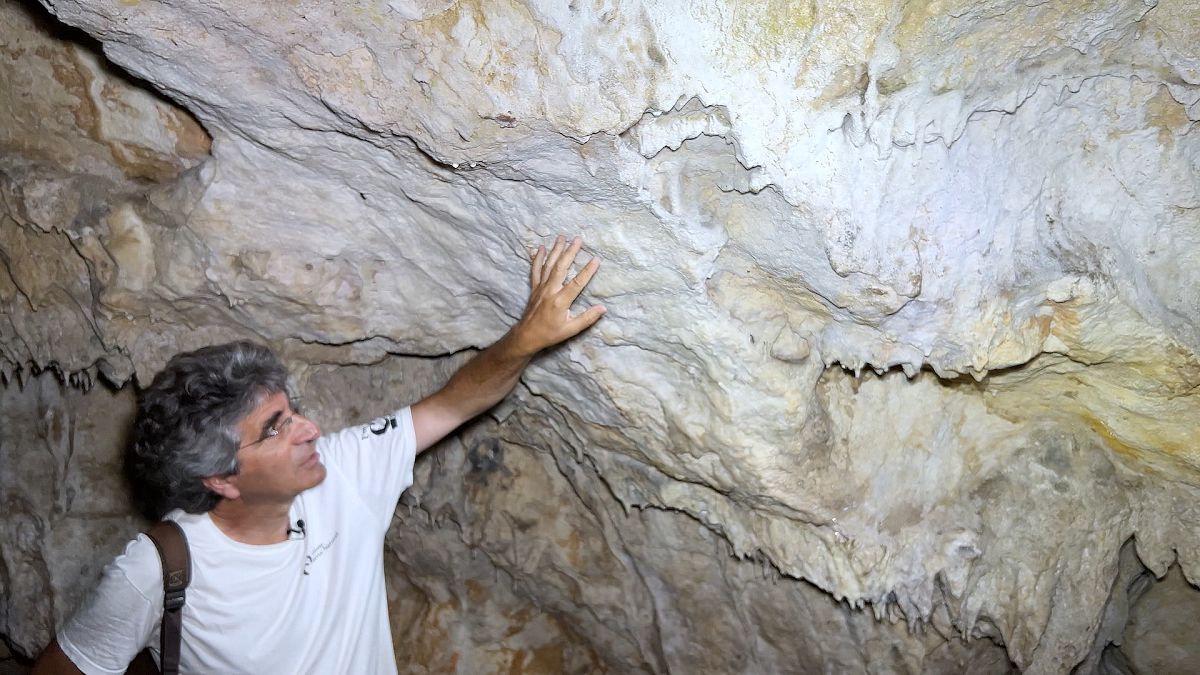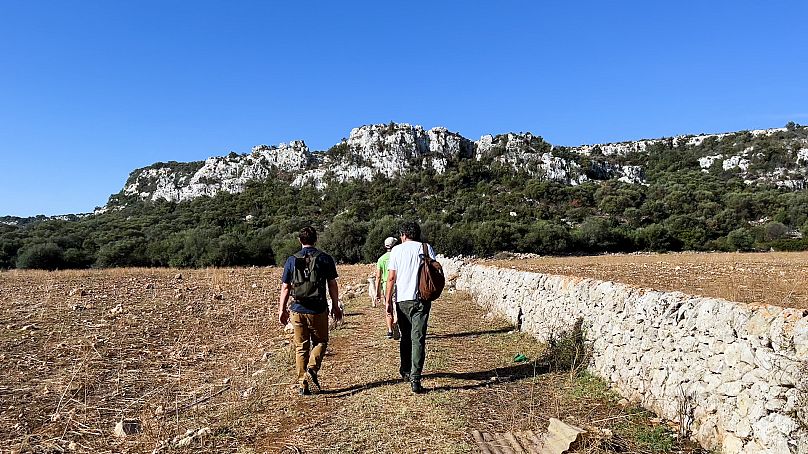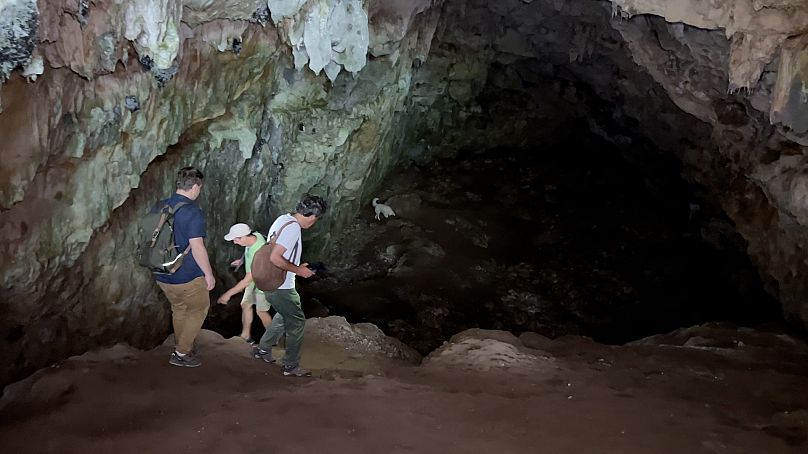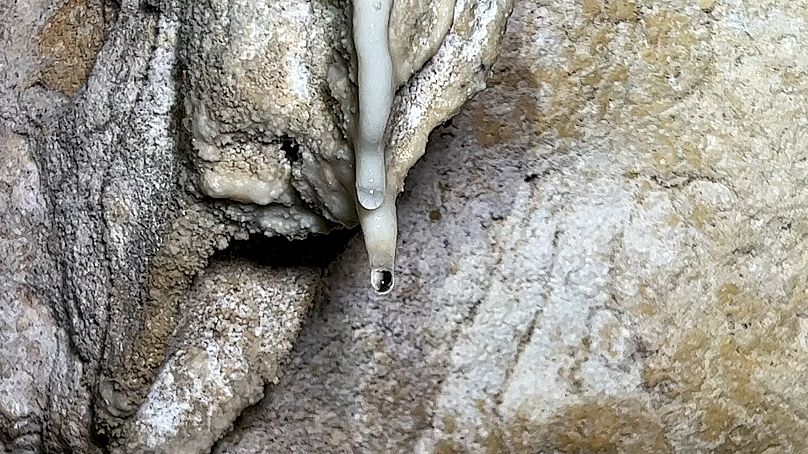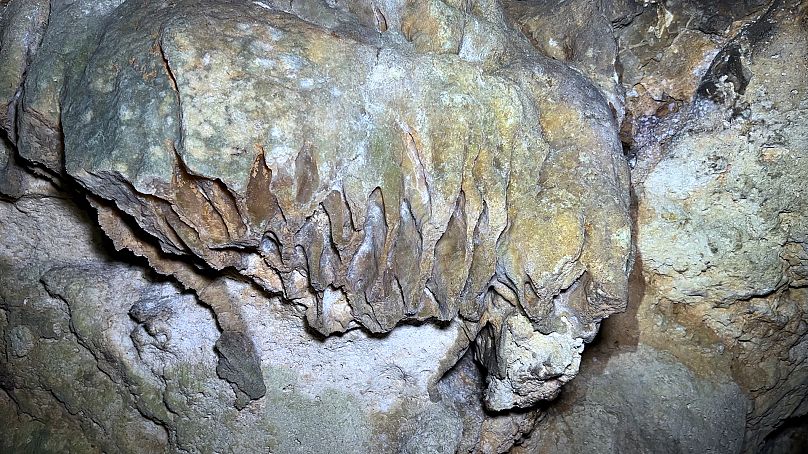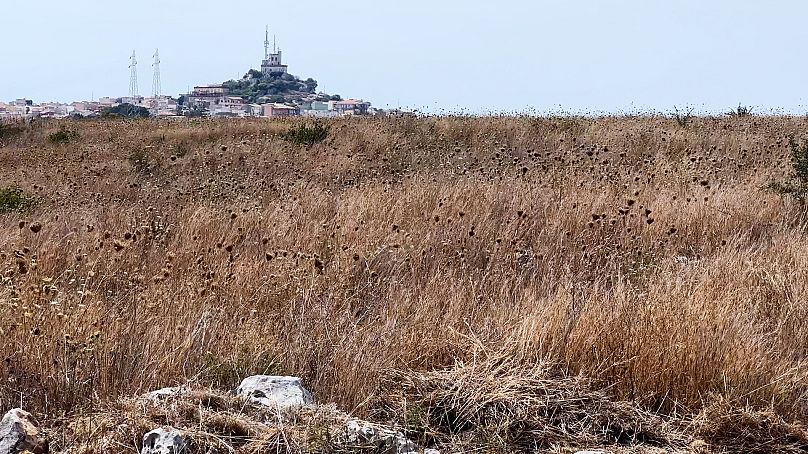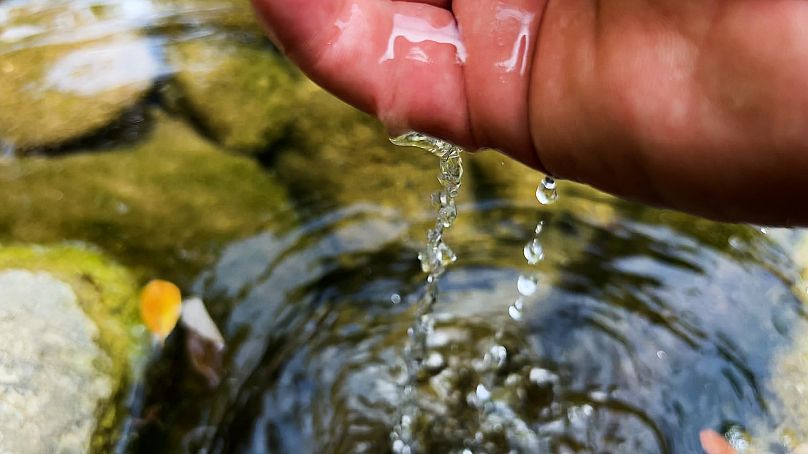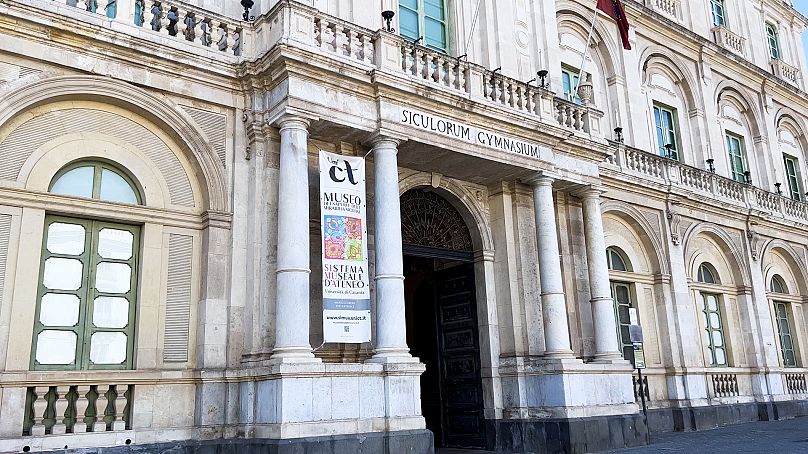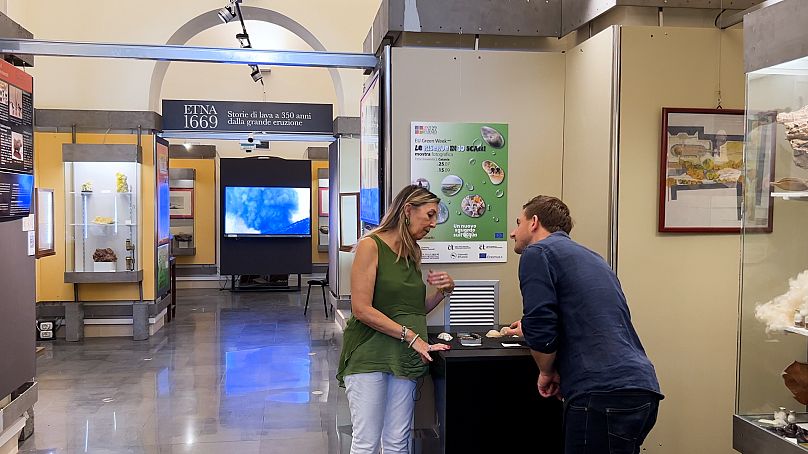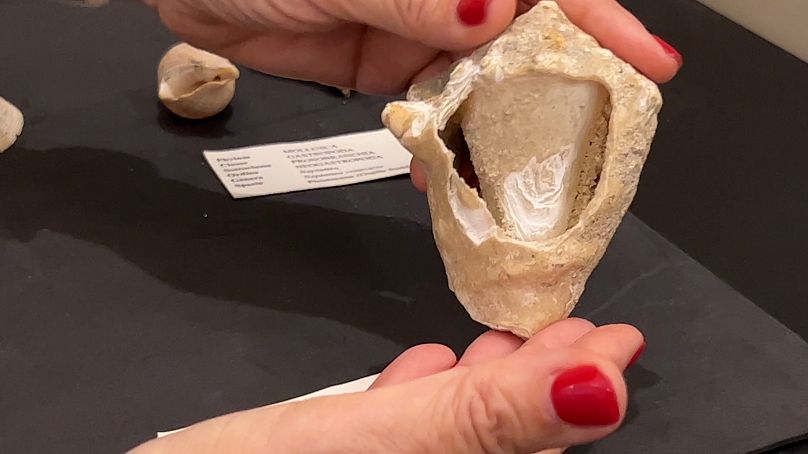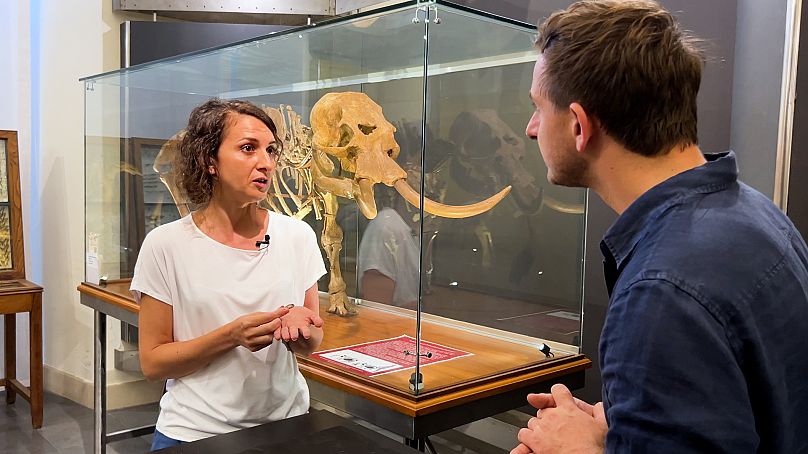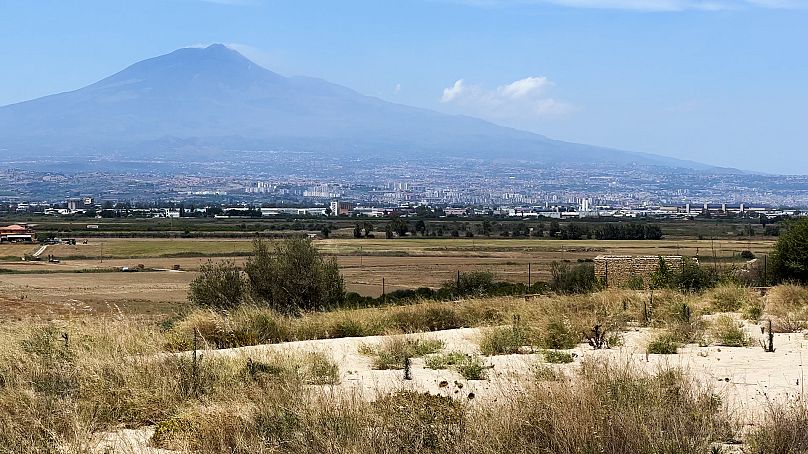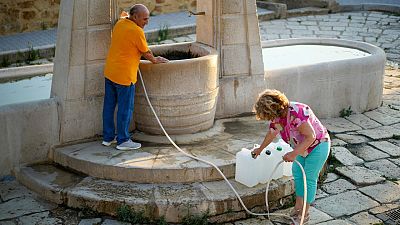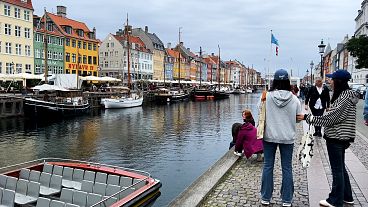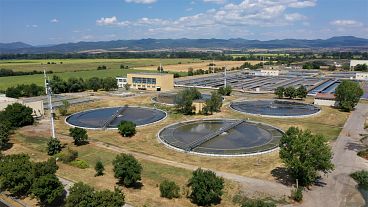As Sicily faces one of the worst droughts of the past decades, the University of Catania is organising a series of events as part of EU Green Week 2024. Scientists are taking us on a journey back in time to better understand the impact of climate change on the island.
"Almost all the water consumed by Sicilians comes from underground," explains Professor Sandro Privitera, a geologist at the University of Catania, as we enter one of the many karstic caves of the Catania plain.
In these cavities formed in the limestone several million years ago, the cool dampness contrasts with the scorching heat on the surface. Drops of water fall from the stalactites. But this phenomenon is being altered by climate change.
"Normally, you can hear the sound of falling drops, but the water flows much less than before. Some of the limestone rocks are fossilising due to the lack of rain," explains the archaeologist, pointing to a bleached wall.
When we emerged into the furnace of the Grotta Palombara Nature Reserve - one of the seven reserves managed by the University of Catania - the professor's team had cut back the tall grass to limit the risk of fire. They have also planted trees that are more resistant to drought. Some of them flowered as early as January this year.
The vegetation in this area is steppe-like. Plants are becoming increasingly rare. "When the Greeks arrived here, everything was covered in trees. They have since been cut down and burnt to make way for pasture and farmland," explains Professor Privitera.
"Little by little, we are trying to restore biodiversity. Planting trees increases the soil's capacity to retain water, so that it remains moist and gives vegetation more chance to develop," explains the scientist.
Down below, a stream bears witness to the magic of karstic systems: although there has been almost no rain this year in the region, the water trickles down into a valley populated by trees, flowers and insects.
"Water is gold. It's an opportunity and a paradise. We can live without oil or cars, but not without water. We must preserve it at all costs," explains Professor Privitera.
Catania University on a mission to build water resilience
The University of Catania has organised a series of events entitled "The Future in Drops, the role of Protected Areas in water resilience" as part of EU Green Week. The University is organising guided tours of nature reserves to highlight the role of protected areas in mitigating climate change.
In the Piazza della Università museum, scientists are also sharing their views on climate change in Sicily. On display is the skeleton of an elephant, an animal that once inhabited the wetlands of the Catania plain. The pachyderm, which bears witness to the evolution of the region's fauna through the ages, is now the symbol of the city and its University.
Major changes have taken place over the millennia, both on land and underwater. "Marine ecosystems have always been resilient and have always adapted to environmental variations," explains Professor Rossana Sanfilippo, Head of the Palaeontology and Palaeoecology Laboratory of the Department of Biological, Geological and Environmental Sciences at the University of Catania, as she shows us molluscs that today inhabit the boreal oceans but whose fossils are abundant in Sicilian waters.
Conversely, the Sicilian seas are now teeming with new species from other parts of the world. This is the case of a small mussel which came from the Indian Ocean via the Suez Canal. "They are finding a favourable climate because sea temperatures are rising. But these invasive species are now threatening the local fauna," explains researcher Emmanuella Di Martino.
Professor Barone recalled that during the Quaternary period, some 2.5 million years ago, this region of the world experienced alternating glacial periods and interglacial periods, with high temperatures.
"But today, the problem is more complex, because in addition to climate change, there is also the impact of human activity. Greenhouse gas emissions are causing sea-level rise, abnormal temperature rises and acidification of the sea. This is a huge problem for many living organisms, such as corals," the Professor concludes.



